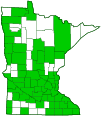boxelder
(Acer negundo var. negundo)
Conservation • Wetland • Description • Habitat • Ecology • Use • Distribution • Taxonomy
Description |
||
Boxelder (var. negundo) is a fast-growing deciduous tree rising on a single trunk from a shallow, fibrous root system. It may form a taproot in deep soils. Large individuals can reach over 100′ in height and 59″ in diameter at breast height, though in Minnesota mature trees are usually 30′ to 50′ tall and up to 36″ in diameter. It is prone to disease (including leaf anthracnose, bark canker, and trunk heart rot) making it moderately short-lived, usually living about 60 years, though older individual may survive up to 100 years. The trunk is usually crooked and often divided close to the ground into several major limbs. In forests the trunk is sometimes long and straight. The crown is broad and uneven. The branches are long, spreading, crooked, and irregularly branched. They are brittle and subject to breakage. Exposed trees usually have broken tops. Sprouts are often produced from damaged areas on the lower trunk. The bark on young trees is thin, light grayish-brown, and finely scaly. It has raised, buff or orange lenticels. On mature trees the bark is thicker, light brown to gray, and cut with shallow, narrow furrows and narrow, rounded, intersecting ridges. The ridges intersect every 6 inches or less. Orange lenticels are visible in the furrows. On older trees the bark is deeply furrowed and the ridges break horizontally into squarish blocks. The twigs are hairless and moderately stout with prominent, raised bumps (lenticels). They are round in cross section; have white, solid, homogenous pith; and have a strong, disagreeable odor when broken. When young they are heavily covered with a whitish, powdery bloom (glaucous) that easily rubs off. As they age the bloom wears off. Older twigs are bright green or olive green and shiny. The leaf scars are small and broadly U-shaped. They have 3 bundle scars. The leaf scar wraps around the stem, the raised tips almost meeting those of the opposite leaf scar. The sap of a freshly cut twig is clear. Terminal buds are egg-shaped, ⅛″ to 5 ⁄16″ long, and bluntly pointed at the tip. They usually have 4, sometimes 2, reddish, distinctly overlapping scales. The scales are densely covered with fine, whitish, appressed hairs. Lateral buds are slightly smaller and are tightly pressed against the twig. They are concealed by the base of the leaf stalk, and are not visible until the leaf has fallen off. The leaves are deciduous, opposite, and 2¾″ to 9″ long. They are on 1⅜″ to 4″ long leaf stalks. The leaf stalks are usually hairless, occasionally short-hairy. Two types of leaves are produced: early leaves, also called preformed leaves; and late leaves, also called neoformed leaves. Early leaves are fully formed and overwinter in the bud. They are the first leaves to mature in the spring. They are produced on short (preformed) shoots and at the base of long (partially preformed, partially neoformed) shoots. They are divided into only 3 leaflets and are broadly triangular egg-shaped in outline. Late leaves are formed at the end of long shoots. They are oblong egg-shaped in outline and are pinnately divided into usually 5, sometimes 7, rarely 9, leaflets. The leaflets are 2″ to 4″ long, ¾″ to 2⅜″ wide, and oblong to egg-shaped. They are tapered or rounded at the base and taper to a sharp point at the tip with straight or concave sides along the tip. The terminal leaflet is sometimes inversely egg-shaped and sometimes 3-lobed. The upper surface is light green and usually hairy when young, becoming hairless or almost hairless at maturity. The lower surface is pale grayish-green and usually hairy when young, becoming sparsely hairy, especially along the veins, or almost hairless at maturity. The margins are usually coarsely and irregularly toothed, with 3 to 5 teeth per side, sometimes untoothed. The lateral leaves often have 1 or 2 shallow lobes. In autumn the leaves turn yellow. Male and female flowers are borne on separate trees, rarely on the same tree. They appear before the leaves or during leaf development in mid-April to late May. The male inflorescence is a tight, umbrella-like bundle (fascicle) of 10 to 20 flowers produced from a lateral bud on the twig. The fascicle droops at the end of a greenish-yellow, hairy, thread-like, ⅜″ to 1¾″ long flower stalk. The male flower has a yellowish-green calyx with 5 minute lobes, no petals, and 3 to 6 stamens. The female inflorescence is a short, unbranched cluster (raceme) produced from buds at or near the branch tips. The raceme droops at the end of a greenish-yellow, hairy, thread-like, about ⅜″ long flower stalk. It is subtended by a leaf. The female flower has a yellowish-green calyx with 3 to 5 minute lobes, no petals, and a single, deeply lobed style with 2 stigmas. The fruit is a pair of dry seed cases with papery wings attached (double samara). They occur in clusters that droop downward from long stalks. Each double samara is in the shape of an inverted V, connected at the top with the wings spreading apart at less than a 90° angle. Individual samaras (or keys) are 1¼″ to 2″ long. The seed cases are elongated and wrinkled. They are slightly connected to each other when young and separated at maturity. The wings are typically ¾″ to 1½″ long. The keys are usually hairless, green initially, turning yellowish green when the seeds are mature, then brown in the fall. They mature late August to late September and fall throughout the winter. |
||
Height |
||
30′ to 50′ |
||
Record |
||
The champion boxelder in Minnesota is on private property near Minneapolis, in Hennepin County. In 2018 it was measured at 50′ tall and 163″ in circumference (52″ in diameter). |
||
Flower Color |
||
Reddish |
||
Similar Species |
||
Saplings usually have just 3 leaflets, which may cause them to be misidentified as western poison ivy (Toxicodendron rydbergii). That plant, however, has alternate leaves. Boxelder (Acer negundo var. interius) twigs are densely covered with short, soft, velvety hairs. The leaf undersides usually have tufts of hairs in the vein axils. The fruits are sometimes short-hairy. It is a western variety and is uncommon to rare in Minnesota. |
||
Habitat |
||
Wet or moist. Floodplains, lakeshores, streambanks, upland hardwood forests. Rich soil. |
||
Ecology |
||
Flowering |
||
Mid-April to late May |
||
Pests and Diseases |
||
Boxelder pouchgall mite (Aceria negundi) causes pouch-like galls on boxelder leaves. Maple twig borer moth (Proteoteras aesculana) larva often kill the twigs that they bore into. Their presence can be recognized by noting dead and drooping leaves at the end of a twig.
|
||
Use |
||
|
||
Distribution |
||||
|
Sources |
|||
| 8/22/2022 | ||||
Nativity |
||||
Native |
||||
Occurrence |
||||
Common and widespread |
||||
Taxonomy |
|||
| Kingdom | Plantae (Plants) | ||
| Division | Tracheophyta (Vascular Plants) | ||
| Subdivision | Spermatophytina (Seed Plants) | ||
| Class | Magnoliopsida (Dicots) | ||
Order |
Sapindales (soapberries, cashews, mahoganies, and allies) | ||
Family |
Sapindaceae (soapberry) | ||
| Subfamily | Hippocastanoideae | ||
| Tribe | Acereae | ||
Genus |
Acer (maples) | ||
| Section | Negundo | ||
| Series | Negundo | ||
| Species | Acer negundo (boxelder) | ||
Synonyms |
|||
Acer negundo var. variegatum Negundo aceroides Negundo negundo Rulac negundo |
|||
Common Names |
|||
ash-leaved maple ashleaf maple ash-leaf maple box elder boxelder |
|||
Glossary
Bundle scar
Tiny raised area within a leaf scar, formed from the broken end of a vascular bundle.
Fascicle
A small bundle or cluster, often sheathed at the base, as with pine needles.
Glaucous
Pale green or bluish gray due to a whitish, powdery or waxy film, as on a plum or a grape.
Lenticel
A corky, round or stripe-like, usually raised, pore-like opening in bark that allows for gas exchange.
Pinnate
On a compound leaf, having the leaflets arranged on opposite sides of a common stalk. On a bryophyte, having branches evenly arranged on opposite sides of a stem.
Pith
The spongy cells in the center of the stem.
Raceme
An unbranched, elongated inflorescence with stalked flowers. The flowers mature from the bottom up.
Samara
A dry fruit consisting of a seed attached to a papery wing; one seeded in Elms and Ashes, two-seeded in Maples.
Visitor Photos |
|||||
Share your photo of this plant. |
|||||
| This button not working for you? Simply email us at info@MinnesotaSeasons.com. Attach one or more photos and, if you like, a caption. |
|||||
Honey Fae (Farah) |
|||||
 |
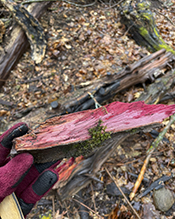 |
||||
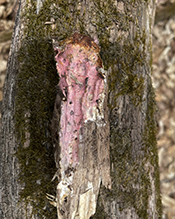 |
|||||
Luciearl |
|||||
Box elder bugs found on Box Elder tree |
|||||
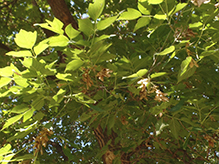 |
|||||
Randy |
|||||
Box elder sapling. Freeborn County, MN, June 2017 |
|||||
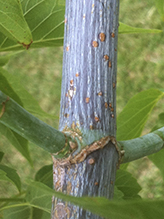 |
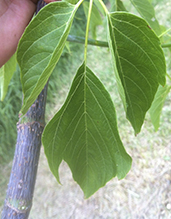 |
||||
MinnesotaSeasons.com Photos |
|||||
Tree |
|||||
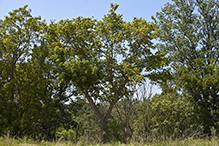 |
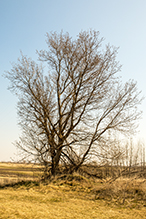 |
||||
Shoot |
|||||
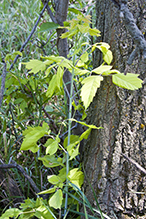 |
|||||
Young Bark |
|||||
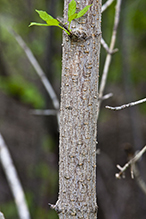 |
|||||
Twig |
|||||
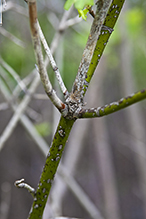 |
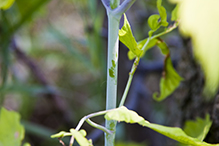 |
||||
Leaves |
|||||
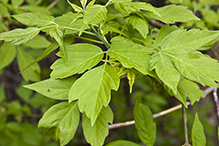 |
|||||
Male Flowers |
|||||
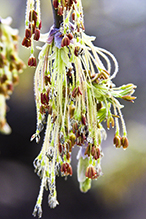 |
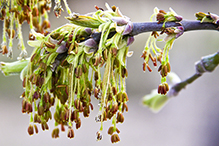 |
||||
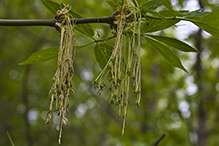 |
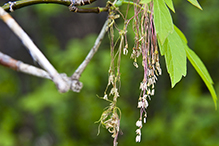 |
||||
Female Flowers |
|||||
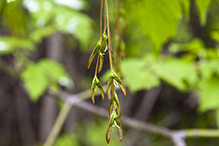 |
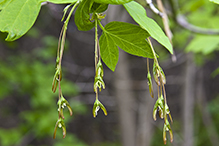 |
||||
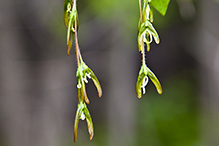 |
|||||
Expanding Buds |
|||||
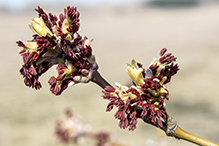 |
|||||

Slideshows |
||

Visitor Videos |
|||
Share your video of this plant. |
|||
| This button not working for you? Simply email us at info@MinnesotaSeasons.com. Attach a video, a YouTube link, or a cloud storage link. |
|||
Other Videos |
|||

Visitor Sightings |
|||||
Report a sighting of this plant. |
|||||
| This button not working for you? Simply email us at info@MinnesotaSeasons.com. Be sure to include a location. |
|||||
| Honey Fae (Farah) 6/12/2022 |
Location: Minnesota |
 |
|||
| Honey Fae (Farah) 5/1/2022 |
Location: Minnesota |
 |
|||
| Honey Fae (Farah) 4/10/2022 |
Location: Minnesota |
 |
|||
| Luciearl 9/17/2018 |
Location: Ramsey County (Taylor Park) Box elder bugs found on Box Elder tree |
 |
|||
| Randy June, 2017 |
Location: Freeborn County, MN Box elder sapling. |
 |
|||
MinnesotaSeasons.com Sightings |
|||||
Avon Hills Forest SNA, North Unit Bertram Chain of Lakes Regional Park Carpenter St. Croix Valley Nature Center Carver Highlands WMA, South Unit Charles A. Lindbergh State Park Clifton E. French Regional Park Clinton Falls Dwarf Trout Lily SNA Felton Prairie SNA, Bicentennial Unit Forestville/Mystery Cave State Park John Peter Hoffman Spring Brook Valley WMA Mary Schmidt Crawford Woods SNA Minnesota Valley NWR, Chaska Unit Minnesota Valley NWR, Rapids Lake Unit Minnesota Valley NWR, Wilkie Unit Minnesota Valley State Recreation Area, Lawrence Unit Mound Spring Prairie SNA, North Unit Nerstrand Big Woods State Park P.N. and G.M. Nelson Wildlife Sanctuary Prairie Creek WMA, Koester Prairie Unit Robert Ney Memorial Park Reserve Sand Prairie Wildlife Management and Environmental Education Area Stanley Eddy Memorial Park Reserve |
|||||

Created 12/31/2013
Last Updated:
